An integrated graphics card is essential for displaying visuals on your monitor screen. Since not all iGPUs are created equally, it is fair to ask how to check what integrated graphics you have (or if you even have one) to gauge its capabilities.
There are many ways to figure out the integrated graphics card you have (if any). If you know the model number of your CPU, then checking out its spec sheet can reveal the iGPU it features. Alternatively, you can use built-in services and utilities in Windows, such as Device Manager, to figure out the iGPU you have as well.
Below I will discuss this in detail, along with necessary information regarding integrated graphics.
All PCs need a graphics card to display stuff on the monitor. Without a graphics card, the PC will not have video rendering and output capability.
TABLE OF CONTENTS
Integrated vs. Dedicated Graphics Card
There are two types of graphics cards that a PC can have: an integrated or a dedicated graphics card.
If you do not have a dedicated graphics card installed separately, your system will have an integrated one.
A dedicated graphics card is a standalone device in the PCIe slots. They are often far more potent than integrated graphics in terms of performance. They can also be quite expensive to procure.
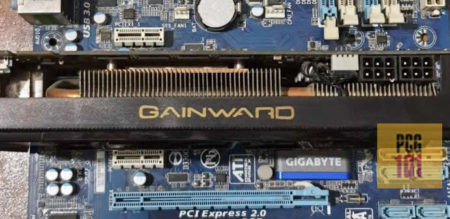
On the other hand, integrated graphics, as the name suggests, are graphics cards that come with CPUs.
Integrated graphics are not as capable as a dedicated graphics card, but they can add essential video output capability to your PC. They are also required to enable the video output ports on the back I/O panel.
A PC can have the following:
- An integrated Graphics Card
- OR a Dedicated Graphics Card
- OR BOTH
Also Read: Does Your PC Need a Graphics Card If It’s Not for Gaming?
How do I Check What Integrated Graphics I Have?
There are several simple ways to check what integrated graphics you have.
Method 1: Check Using the Device Manager
One of the easiest ways to check what integrated graphics card you have is to use the built-in system utilities and services in the Windows Operating system.
One such top-rated utility is the Device Manager.
Device Manager lists all the available hardware components installed on your PC, including the integrated graphics card.
To check out what integrated graphics you have, use the device manager:
- Press the Search Button in the Task Bar
- Type “Device Manager” in the search field
- Open the Device Manager utility
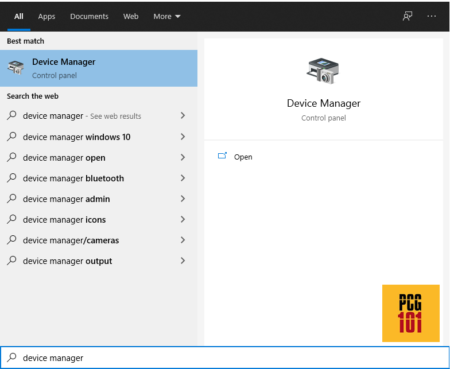
This should open the Device Manager in a new Window.
Alternatively, you can access Device Manager by clicking “This Computer” and selecting “Manage” from the Drop Down Menu. From the Window that opens, select “Device Manager” from the menu on the Left.
With the Device Manager window open:
- Expand the “Display Adapters” section
- Check for the Integrated Graphics.
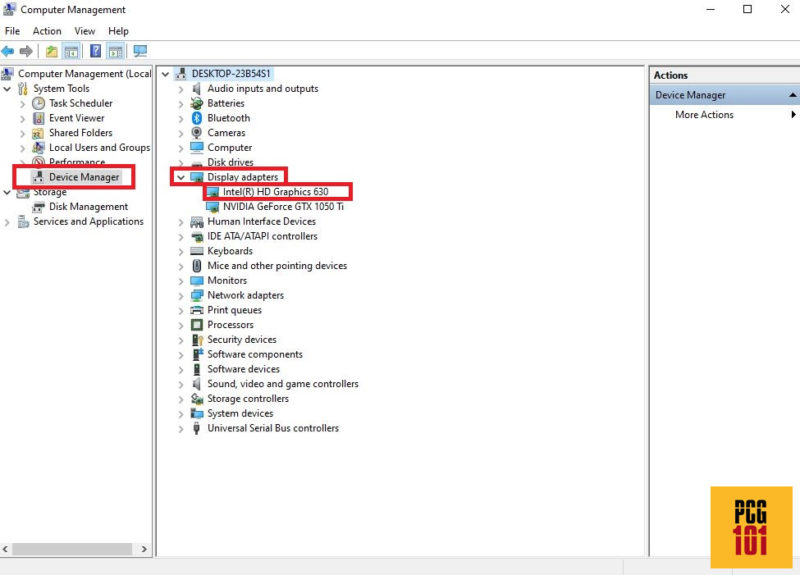
The system above has two GPUs. Intel HD 630 is an integrated graphics card. NVIDIA GTX 1050Ti is a dedicated graphics card.
Suppose you have a dedicated and integrated graphics card on your PC. In that case, you must know the different model names for the iGPUs to differentiate between the two easily.
For instance, all Intel GPUs are integrated graphics cards. All NVIDIA GPUs are dedicated graphics cards.
With AMD, you may have to conduct some research as AMD makes both integrated and dedicated GPUs.
For this method to work, you must have the drivers installed for the iGPUs.
Also Read:
Method 2: Check Using Trusted and Free Third Party Software
Another straightforward way to check and get important information regarding your integrated graphics card is to use trusted and popular FREE third-party software.
There are two that I would recommend:
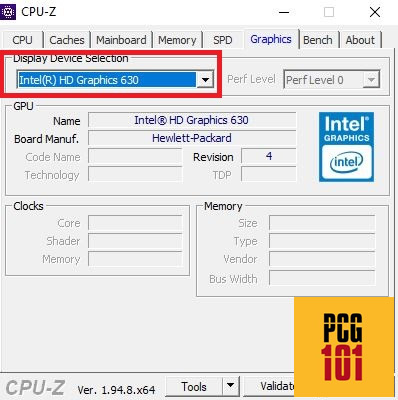
Make sure you have selected the proper GPU from the drop-down menu. (in case you have multiple GPUs installed)
CPU-Z is a popular all-rounder utility for checking what GPU you have on your PC and for checking myriad other aspects such as CPU, RAM, motherboard, etc.

Make sure you have selected the proper GPU from the drop-down menu (in case you have multiple GPUs installed)
On the other hand, GPU-Z is specialized software for a comprehensive and detailed look at the GPUs you have installed. Not only can it tell you what integrated graphics card you have, but it also has so much more.
Installing these utilities is also quite simple. Head to their websites linked above and download the latest version.
Since they are Free, they do not require you to pay.
Generally, I advise against installing third-party software on your PC since their credibility cannot be verified. However, CPU-Z and GPU-Z are relatively safe.
Method 3: Reading The CPU’s Spec sheet
The definitive way to check what integrated graphics card you have on your CPU is to check its spec sheet.
For this method to work, you will need to know the make and model of your CPU.
Search it on Google for its spec sheet and check for processor graphics specifications. You can also search the manufacturer’s website for your CPU model number for its spec sheet.
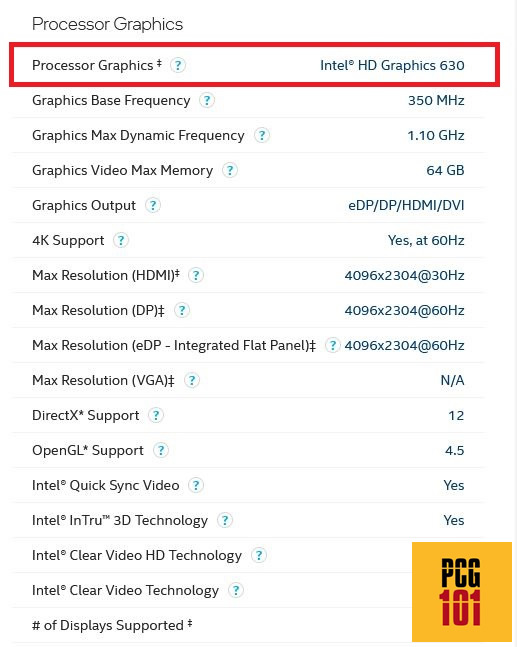
Also Read: How to Disable Integrated Graphics Card?
Not ALL CPUs Have Integrated Graphics
It is also possible for your CPU to have no integrated graphics card at all.
If your CPU does not have an integrated graphics card, you MUST have a dedicated graphics card to display stuff on your monitor.
Both AMD and Intel have CPUs that DO NOT feature an iGPU.
- Intel F Series CPUs like Intel Core i5 1000F do not feature an iGPU.
- Only G series CPUs with AMD, such as the AMD Ryzen 3 3200G, feature an iGPU.
Also Read:
You CAN NOT Tell If You Have Integrated Graphics From the Back I/O Panel
Often people believe that having video output ports on the back I/O panel of your PC indicates that you have an integrated graphics card.
However, that is NOT the definitive way of knowing this.
If your CPU DOES NOT have an iGPU, then the video output ports on the back I/O panel of your motherboard WILL NOT work, EVEN IF your motherboard has them.

Also Read: Do Motherboards Have Integrated Graphics?
Why is it Important to Know What Integrated Graphics You Have?
Not all integrated graphics cards are the same in terms of performance.
Some are as weak as it gets, while others can give some entry-level dedicated graphics cards a run for their money.
I have discussed this in detail in the article: Is Integrated Graphics Card Good Enough?
But the bottom line is that depending upon your iGPU, it may or may not be sufficient for heavier tasks like casual gaming or simple photo/video editing.
For instance, if you have any of the newer AMD RX Vega GPUs as found on Ryzen 4000 and 5000 series GPUs, you may as well be able to game casually on them.
This is a reasonably outstanding achievement, given that iGPUs are not traditionally intended for gaming in the first place.
The following table shows how the iGPUs compare in scores on the G3D Benchmark:
G3D Mark Scores
| GPU | G3D Mark | Notes |
| Intel UHD 630 | 1395 | As found on the 8-10th Gen Intel CPUs |
| Nvidia GeForce GT 740 (MSRP $79) | 1543 | Dedicated GPU Basic |
| Intel UHD 750 | 1684 | As found on 11th Gen+ Intel CPUs |
| AMD Radeon Vega 3 (2018 Version) | 1071 | AMD 2000 Series APU |
| AMD Radeon Vega 6 (2018 Version) | 1274 | AMD 2000 Series APU |
| AMD Radeon Vega 8 (2018 Version) | 1704 | AMD 2000 Series APU |
| Intel UHD 770 | 1928 | As Found on 12th Gen Intel CPUs. |
| Intel Iris Pro 580 | 2044 | Found on premium laptops. |
| AMD Radeon Vega 11 (2018 Version) | 2139 | AMD 2000 Series APU |
| Nvidia GeForce GT 1030 ($79) | 2613 | Dedicated GPU Entry Level |
| AMD Ryzen 5 5600G Vega 7 Graphics | 2639 | Integrated as found on the Ryzen 5600G |
| AMD Ryzen 7 5700G Vega 8 Graphics | 2708 | Integrated as found on the Ryzen 5700G |
| AMD Radeon RX 550 ($79) | 2764 | Dedicated GPU Entry Level |
You can see that the RX Vega 8 iGPU, found on AMD Ryzen 7 5700G, can even go head-to-head against the NVIDIA GT 1030.
Also Read:
Final Words
It is not difficult to figure out what integrated graphics you have. You have system utilities in the OS, third-party software, and a spec sheet to tell you the CPU’s integrated graphics details.
It is, however, slightly tricky to understand how it compares to the rest of the GPUs out there and how good of a performance it can give you.
Even the best-integrated graphics cards are only as good as cheap entry-level dedicated graphics cards.
However, a decent iGPU can be sufficient for casual gaming and simple editing and designing work.
FREQUENTLY ASKED QUESTIONS
1. How can you check what integrated graphics you have on a Windows computer?
To check what integrated graphics you have on a Windows computer, you can use the DirectX Diagnostic Tool.
Press the Windows key + R, type “dxdiag” in the Run dialog box, and press Enter.
Then click on the Display tab, and you’ll see information about your integrated graphics under the Device section.
2. Is there a way to check what integrated graphics you have on a Mac?
Yes, you can check what integrated graphics you have on a Mac by clicking on the Apple icon in the top-left corner of the screen, selecting “About This Mac,” and then clicking on the “System Report” button.
In the System Information window, select “Graphics/Displays” from the sidebar, and you’ll see information about your integrated graphics in the main pane.
3. Can you upgrade your integrated graphics, or do you need to replace the entire system?
In most cases, you cannot upgrade your integrated graphics. Integrated graphics are built into the motherboard or processor of your computer, so upgrading them would require replacing the entire system.
However, if you have a desktop computer with a dedicated graphics card slot, you can install a new graphics card to improve your graphics performance.
4. How do you troubleshoot graphics-related issues on a computer?
To troubleshoot graphics-related issues on a computer, you can start by updating your graphics driver to the latest version.
You can also check for any loose connections between your computer and monitor, and ensure that your monitor is set to the correct resolution and refresh rate.
If these steps don’t resolve the issue, you may need to reset your graphics settings to default, or even consider replacing your graphics hardware if it’s failing.
Read in Detail: Do You Need a Dedicated Graphics Card for Video Editing?

Hi Atif,
This has been really helpful. We have a recent issue with the performance of our SketchUp modelling programme after getting a new Titan Army 34GLR-H 34 inch curved monitor. We cant use a 3D Text tool for labelling 3D plans now as it seems to open off screen and out of reach. We tried the SketchUp workstation reset in the programme but still the model locks up completely when we try to use the 3D text tool. So wondering if the Graphics card that the PC has isn’t coping with the new monitor or whether the driver needs updating.
Hi Dianne,
Does the problem persist with a different monitor or is it just with your new monitor?